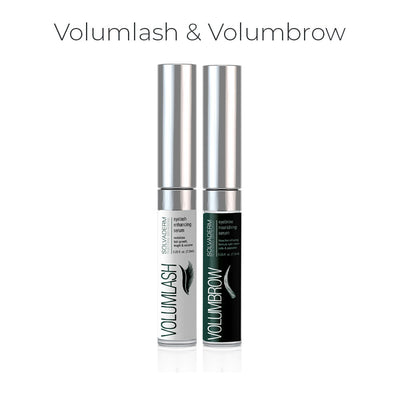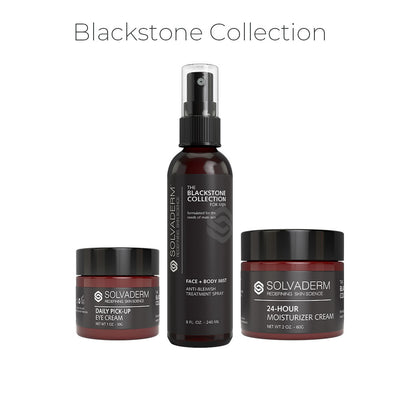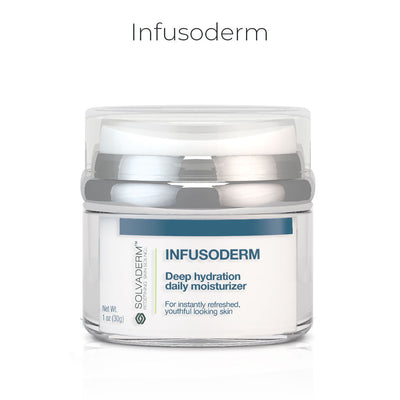There’s no doubt about it - skincare can become more of a challenge as we age, and once we reach 60, most of us experience multiple signs of skin damage. While the severity of the damage differs from person to person, there are steps you can take to improve the look and feel of your skin by following a specific skincare routine for your 60s. Read on to learn more about the changes you can expect in your skin as you age, how to create an effective routine, and useful tips to give you a healthy, glowing complexion in your 60s and beyond!
Skin Changes in Your 60s
How quickly our skin ages depends on several factors, including lifestyle, health, and genes but almost everyone will experience some or all of the following issues as they get older.
Skin Dryness
An increase in dryness is one of the most common signs of aging, and addressing this issue is usually the main focus of a routine for mature skin. In addition to the skin feeling drier and often uncomfortably tight, you may also find that certain areas are rough to the touch, with visible flaking.
More Wrinkles and Fine Lines
The appearance of lines and wrinkles is another common sign of skin aging, particularly in vulnerable areas such as around the eyes, the neck, and the chest, or those that are subjected to repetitive movements like the forehead and the mouth area.
Loss of Elasticity
As skin ages, it no longer ‘bounces back’ the way it used to, and this is due to a loss of elasticity. Over time, this causes it to appear loose and lined rather than full, firm, and plump like it was when you were young.
Thinner Skin
Some people, especially those with a dry skin type, naturally have thinner skin and may experience lines, wrinkles, and ‘crepiness’ earlier than those who don’t, although even individuals who have had oilier, thicker skin all their life will likely experience thinning skin after the age of 60.
Sagging Skin
Sagging skin goes hand in hand with a decline in collagen production, and the first areas that you may notice it occurring are in the jawline with the development of jowls, the corners of the mouth, and the eye area, creating hooded eyelids.
More Dark Spots
Dark spots develop as we get older due to an increase in hyperpigmentation that occurs for several reasons, the most common being sun exposure - which is why they’re often referred to as ‘sun spots’ - and will be more severe for those who have spent more time outdoors over the years.
Other Factors To Consider
Beyond the most common signs of aging, as outlined above, there are other skin issues you may experience as you get older, including an increase in bruising, infections, and conditions such as eczema. Skin cancer is, of course, a concern at any age, and while prevention is key, it’s also important to know the signs to look for so you can get it treated as soon as possible.
Ideal Skincare Routine For Your 60s
Skincare for women over 60 doesn't have to be complicated - it just needs to be tailored to the unique needs of mature skin. You have to know what key ingredients to look for and make sure you adhere to your routine. The following steps incorporate all the basic elements, plus the addition of treatments that will target specific areas of concern in aging skin.
Step #1 - Cleanser
Cleansing is a primary step in skincare routines for all ages, but as you age, you need to find a cleanser that offers additional benefits. Look for one that is gentle on the skin and will deeply cleanse without leaving it feeling taut, with ingredients such as lavender oil to soothe and soften, and lactic acid, a natural substance that encourages cellular turnover, both of which you’ll find in our clarifying cleanser Rejuvoderm.
Step #2 - Toner
Don’t make the mistake of thinking toners are only good for oily skin! While they certainly will benefit an oily skin type, using a toner that contains soothing, hydrating botanicals will make a big difference in your aging skin care routine. With extracts of witch hazel, horsetail, and comfrey, Maxatone ensures that your skin is free from any residual dirt, makeup, or bacteria, yet still fully hydrated, even-toned, and smooth.
Step #3 - Apply Serums
If you haven’t added a serum to your routine yet, this is the time to do it. Any tips you see regarding skincare for over 60 inevitably mention using serums because they can directly target specific issues you may be having, such as lack of hydration. The bestselling serum Excelagene contains one of the most effective hydrating ingredients, hyaluronic acid, which works quickly to give skin a plump, full appearance, thereby minimizing fine lines and wrinkles.
Step #4 - Eye Cream
Giving the eye area a little extra TLC when you’re over 60 is non-negotiable. Even if you’ve been using an eye cream for years to be proactive about skin aging, you should consider switching to something that repairs existing damage in addition to preventing more from occurring. A product with nourishing, skin-healing properties will help to reduce visible signs of aging, such as crow’s feet and fine under-eye lines, but make sure it also contains powerful antioxidants, such as squalane and Eriobotrya Japonica extract, two ingredients that give Eyevage Age-Defying Eye Cream the ability to fight skin-damaging free radicals effectively.
Step #5 - Moisturizer
While most people already use a moisturizer as part of their daily routine, skincare for women over 60 requires one that addresses the specific concerns they face at this age. As dryness is common with aging skin, your moisturizer needs to offer deep hydration so it doesn’t just keep the complexion soft and smooth on the surface but will restore hydration levels to prevent dry, flaky patches over the long term. Ingredients with humectant properties, such as glycerin and hyaluronic acid, are key, as are natural plant sugars, like the ones used in the Infusoderm formula. This innovative, lightly textured gel cream not only hydrates but protects from damage with antioxidants while giving the complexion an instant boost of refreshment with every use.
Step #6 - Sunscreen
We all know the importance of sunscreen at any age, and even if you no longer spend hours basking in the sun, it’s important to apply it daily, even on overcast days when skin can still sustain damage from UV rays. The most convenient way to incorporate sunscreen into your aging skin care routine is with a moisturizer containing skin-softening ingredients, such as glycerin and beeswax, that also offers UV protection. With SPF30 in its formula, Dermaxsol daily moisturizer does double duty, keeping the skin well-hydrated while protecting it from sun damage.
Step #7 - Facial Oil (Optional)
There are multiple types of facial oils to choose from, and they offer several benefits, helping trap moisture in the skin, brighten a dull complexion, prevent free radical damage, and give the skin an overall more dewy, youthful appearance. Individuals with a mature skin type should opt for oils such as coconut, argan, and rosehip. In addition, if your skin is sensitive, lavender and calendula are the key ingredients to look for.
Step #8 - Facial Mask (Optional)
Nothing feels as pampering as treating your skin with a facial mask at least once or twice a week. While they come in many different formulations, including sheet masks, overnight masks, and peeling masks, look for those that contain skin-nourishing, moisture-boosting ingredients such as honey and ginseng, plus an array of antioxidants, peptides, and growth enzymes.
Bonus Tips For Healthier Skin in Your 60s
Of course, a healthy lifestyle will make a big difference in the way your skin ages, and even if you already have existing signs of aging, it’s never too late to make some positive changes. Choosing nutrient-dense, unprocessed foods over those high in sugar, trans fats, and additives is a good start, and make sure you remember to sip water throughout the day to avoid dehydration. Regular exercise will boost blood flow, ensure a good supply of oxygen to the skin cells, help remove harmful toxins, and even support collagen production.
You already know the dangers of smoking and its detrimental effect on your skin, but if you have trouble quitting, talk to your doctor about the various treatment options available. And, while you don’t necessarily need to avoid drinking alcohol completely, it’s wise to limit your intake to prevent the drying effect it has on the skin.
FAQs
Question #1 - How can I take care of my face at 60?
The best skincare for those over 60 will focus on repairing existing damage while preventing the development of further signs of aging, so look for products that contain powerful peptides and antioxidants. Like most individuals your age, you’ll likely be experiencing an increase in dryness and will need treatments that restore hydration levels and strengthen the skin’s protective barrier to keep moisture locked in over the long term, something that will also benefit younger individuals with a dry skin type.
Question #2 - Can you improve your skin at 60?
Using the right skincare products and adopting some healthier habits will benefit individuals of all ages, and even when you’ve reached your sixties, you will certainly begin to see visible improvements in your skin over time if you make some changes to your routine and lifestyle. There is also a wide range of clinical treatments that can help accelerate these improvements, such as injectable fillers, laser resurfacing, and PRP.
Key Takeaways
Skincare for women over 60 is always advancing, and while it may not be possible to have the complexion of a twenty-year-old again, there’s no reason you shouldn’t still be able to enjoy healthy, glowing skin with minimal signs of aging as you get older. Creating an effective skincare routine that consists of clinically proven, high-quality formulas will not only help to repair existing skin damage but also increase the skin’s resilience to further harm and improve the health and longevity of the skin cells. One of the many reasons our customers love the Solvaderm anti-aging treatments is that they get maximum results in minimal time, so check out our collection today and discover how wonderful it is to love the skin you’re in at any age!








